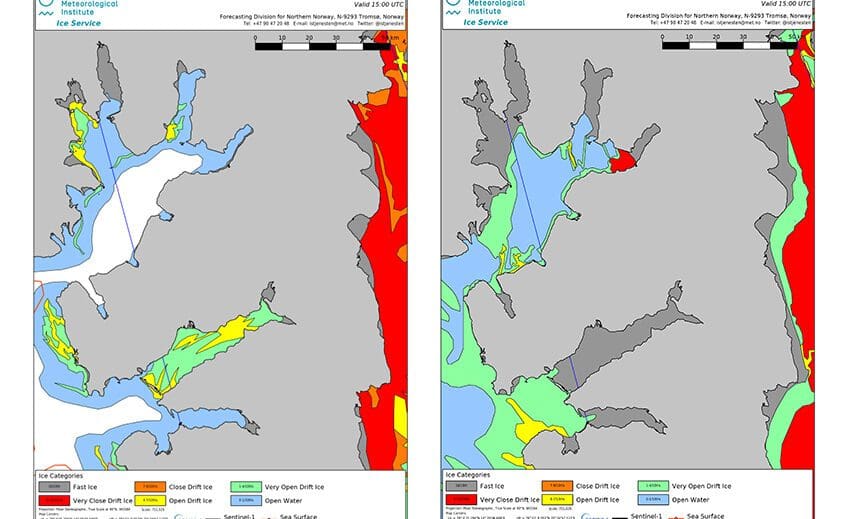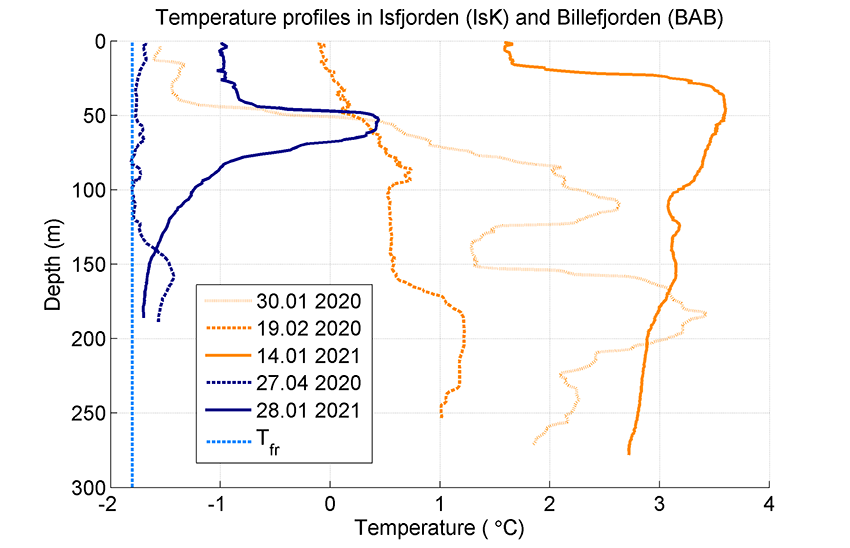Where is the sea ice?

Sea ice maps 2021 and 2020
Ice map: Concentration of sea ice at the beginning of February in 2021 (left) and in 2020 (right) where we see that the side fjords in Isfjorden and Van Mijenfjorden were mostly covered by solid sea ice at this time last year. Source: cryo.met.no
The answer to that question is that the sea ice most likely will not settle in Isfjorden this winter.
8 February 2021
Text: Janne E. Søreide, Ragnheid Skogseth, Sine-Sara Astad, Cheshtaa Chitkara and Anna Vader, the University Center in Svalbard (UNIS).
In September 2020, there was little warm Atlantic water to be traced in Isfjorden and the prospects for nice and solid sea ice this winter were good. But there was warm Atlantic water on the shelf outside Isfjorden, just waiting to get in: Warm Atlantic water wants in, but is prevented from entering Isfjorden.
This warm water has now let in! In the middle of Isfjorden we now see warm salt water in the entire water column, with the exception of a fresher and thus lighter layer in the upper 25 m (see temperature graph). Even deep in Billefjorden, warm Atlantic water has prevented the formation of sea ice. The reason for this is that the warm water from Isfjorden is so high up in the water column that it manages to penetrate over the threshold all the way to Adolfbukta (see temperature graph).

With so much hot water in Isfjorden towards the end of January, there are poor prospects for solid sea ice, in contrast to what we experienced last year: 2020 – A good sea ice year in Svalbard?
And if the sea ice should settle, then be extra vigilant for rapid changes in ice conditions. There is now a large reservoir with hot water in Isfjorden, and changes can occur quickly with weather changes. Either by mixing warmer water from the depths or by moving water from other places in the fjord. The same phenomenon probably applies to most west-facing fjords along Spitsbergen, so check the ice conditions and thickness carefully before driving over the ice!